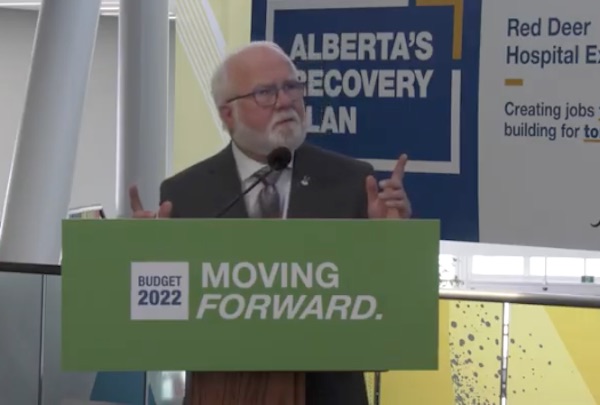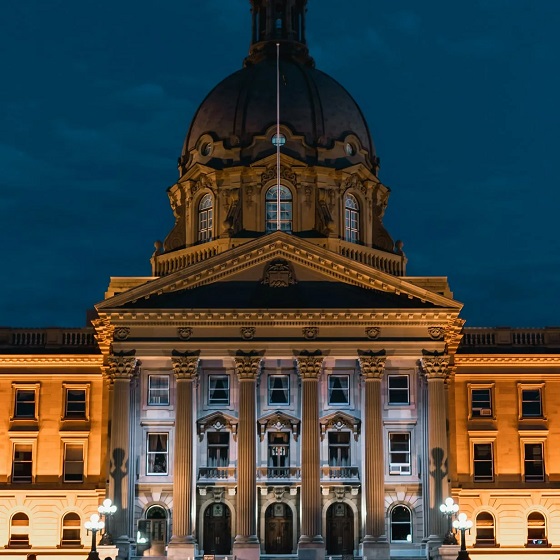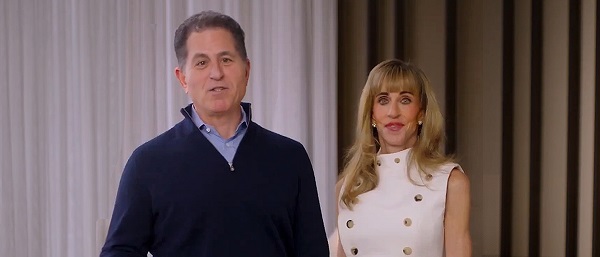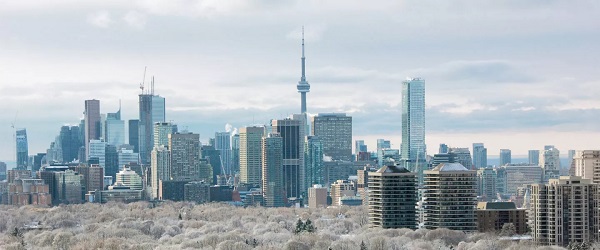Alberta
FINALLY! Province announces new Red Deer Hospital expansion and it’s much bigger than previous plan

Red Deer hospital $1.8B expansion builds for the future
Alberta’s government will invest $1.8 billion to redevelop and expand the Red Deer Regional Hospital Centre as part of the province’s strategy to increase health care capacity, providing central Albertans with better hospital care for years to come.
The $1.8 billion hospital expansion is the largest in Alberta’s history and the largest taxpayer investment in the history of central Alberta. It will begin with a $193 million investment over the next three years and will include 200 new in-patient beds, increasing hospital capacity from 370 beds to 570 beds or by 54 per cent.
The expansion also provides for three new operating rooms, increasing surgical capacity to 14 operating rooms.
A new cardiac catheterization lab will also be part of the hospital’s expansion.
“For too long, central Albertans have been waiting for these critical upgrades and expansion of the Red Deer Regional Hospital. That’s why we’ve made expanding the Red Deer Regional Hospital a priority, and we’re putting our money where our mouth is. Alberta’s Recovery Plan has already seen healthcare infrastructure built from Grande Prairie to Calgary, and now, it’s making sure world-class health care is there for Red Deer and central Alberta for years to come with the largest investment in the history of central Alberta.”
“This important investment will ensure the Red Deer Regional Hospital Centre continues to provide exceptional quality hospital care for the residents in the Red Deer region for decades to come. This investment is a key component of the Alberta government’s commitment to building health-care capacity throughout the province.”
The project’s next steps include functional programming and design. Completion of the expansion is slated for 2030-2031.
“Red Deer and central Alberta’s growing populations mean that our ability to effectively provide health care with the current hospital is limited, resulting in all too frequent disruptions to patient care. This needed redevelopment will increase capacity and expand services to meet central Albertans’ needs into the future. It’s another example of our government’s commitment to build health system capacity throughout Alberta.”
“I know how important this project is to the residents of central Alberta. This important expansion of the Red Deer hospital will create jobs and improve residents’ access to health-care services in the years to come.”
“The expansion of the Red Deer Regional Hospital Centre is extremely significant for our city and long overdue. This historical investment means that central Albertans will benefit from increased surgical and in-patient capacity, benefiting our community in ways that were previously not possible. In addition, I am so pleased that local patients will finally have a cardiac catheterization lab as part of this amazing expansion, which will literally save lives. As the third-largest city in the province, this expansion will go a long way in providing the medical care and attention we have long needed and strongly advocated for.”
“This is welcome news for our staff and physicians at Red Deer Regional Hospital Centre, as well as to all those we care for within its walls. Being able to expand our in-patient capacity, as well as critical programs like surgical services with new operating rooms, is paramount to continuing to serve the health-care needs of central Albertans as so many rely on Red Deer Regional. On behalf of Alberta Health Services, we are grateful for the support of government partners in moving this project forward, and for the ongoing efforts of our teams who eagerly await this expansion.”
“This is a monumental day for our city and for the central Alberta region. It is with extreme gratitude that we recognize the provincial government for this significant investment in the care of central Albertans.”
“Located along one of the busiest transportation corridors in the province, Red Deer County serves close to 20,000 residents within central Alberta. The county welcomes this news and is appreciative of the Government of Alberta’s capital investment to our region for the improvement of health care for our residents.”
Quick facts
- The Red Deer Regional Hospital Centre is the busiest hospital outside of Edmonton and Calgary. It has the fourth-highest volume of any Alberta Health Services’ facility.
- Approximately 50 per cent of patients seen at the hospital are referred from communities outside of Red Deer.
- The hospital offers a full spectrum of acute care, including advanced surgery, internal medicine and diagnostics, as well as obstetrics, pediatrics, oncology, critical care and emergency care.
- $100 million was allocated to the project in Budget 2020.
Alberta
Premier Smith: Canadians support agreement between Alberta and Ottawa and the major economic opportunities it could unlock for the benefit of all

From Energy Now
By Premier Danielle Smith
Get the Latest Canadian Focused Energy News Delivered to You! It’s FREE: Quick Sign-Up Here
If Canada wants to lead global energy security efforts, build out sovereign AI infrastructure, increase funding to social programs and national defence and expand trade to new markets, we must unleash the full potential of our vast natural resources and embrace our role as a global energy superpower.
The Alberta-Ottawa Energy agreement is the first step in accomplishing all of these critical objectives.
Recent polling shows that a majority of Canadians are supportive of this agreement and the major economic opportunities it could unlock for the benefit of all Canadians.
As a nation we must embrace two important realities: First, global demand for oil is increasing and second, Canada needs to generate more revenue to address its fiscal challenges.
Nations around the world — including Korea, Japan, India, Taiwan and China in Asia as well as various European nations — continue to ask for Canadian energy. We are perfectly positioned to meet those needs and lead global energy security efforts.
Our heavy oil is not only abundant, it’s responsibly developed, geopolitically stable and backed by decades of proven supply.
If we want to pay down our debt, increase funding to social programs and meet our NATO defence spending commitments, then we need to generate more revenue. And the best way to do so is to leverage our vast natural resources.
At today’s prices, Alberta’s proven oil and gas reserves represent trillions in value.
It’s not just a number; it’s a generational opportunity for Alberta and Canada to secure prosperity and invest in the future of our communities. But to unlock the full potential of this resource, we need the infrastructure to match our ambition.
There is one nation-building project that stands above all others in its ability to deliver economic benefits to Canada — a new bitumen pipeline to Asian markets.
The energy agreement signed on Nov. 27 includes a clear path to the construction of a one-million-plus barrel-per-day bitumen pipeline, with Indigenous co-ownership, that can ensure our province and country are no longer dependent on just one customer to buy our most valuable resource.
Indigenous co-ownership also provide millions in revenue to communities along the route of the project to the northwest coast, contributing toward long-lasting prosperity for their people.
The agreement also recognizes that we can increase oil and gas production while reducing our emissions.
The removal of the oil and gas emissions cap will allow our energy producers to grow and thrive again and the suspension of the federal net-zero power regulations in Alberta will open to doors to major AI data-centre investment.
It also means that Alberta will be a world leader in the development and implementation of emissions-reduction infrastructure — particularly in carbon capture utilization and storage.
The agreement will see Alberta work together with our federal partners and the Pathways companies to commence and complete the world’s largest carbon capture, utilization and storage infrastructure project.
This would make Alberta heavy oil the lowest intensity barrel on the market and displace millions of barrels of heavier-emitting fuels around the globe.
We’re sending a clear message to investors across the world: Alberta and Canada are leaders, not just in oil and gas, but in the innovation and technologies that are cutting per barrel emissions even as we ramp up production.
Where we are going — and where we intend to go with more frequency — is east, west, north and south, across oceans and around the globe. We have the energy other countries need, and will continue to need, for decades to come.
However, this agreement is just the first step in this journey. There is much hard work ahead of us. Trust must be built and earned in this partnership as we move through the next steps of this process.
But it’s very encouraging that Prime Minister Mark Carney has made it clear he is willing to work with Alberta’s government to accomplish our shared goal of making Canada an energy superpower.
That is something we have not seen from a Canadian prime minister in more than a decade.
Together, in good faith, Alberta and Ottawa have taken the first step towards making Canada a global energy superpower for benefit of all Canadians.
Danielle Smith is the Premier of Alberta
Alberta
A Memorandum of Understanding that no Canadian can understand

From the Fraser Institute
The federal and Alberta governments recently released their much-anticipated Memorandum of Understanding (MOU) outlining what it will take to build a pipeline from Alberta, through British Columbia, to tidewater to get more of our oil to markets beyond the United States.
This was great news, according to most in the media: “Ottawa-Alberta deal clears hurdles for West Coast pipeline,” was the top headline on the Globe and Mail’s website, “Carney inks new energy deal with Alberta, paving way to new pipeline” according to the National Post.
And the reaction from the political class? Well, former federal environment minister Steven Guilbeault resigned from Prime Minister Carney’s cabinet, perhaps positively indicating that this agreement might actually produce a new pipeline. Jason Kenney, a former Alberta premier and Harper government cabinet minister, congratulated Prime Minister Carney and Premier Smith on an “historic agreement.” Even Alberta NDP Leader Naheed Nenshi called the MOU “a positive step for our energy future.”
Finally, as Prime Minister Carney promised, Canada might build critical infrastructure “at a speed and scale not seen in generations.”
Given this seemingly great news, I eagerly read the six-page Memorandum of Understanding. Then I read it again and again. Each time, my enthusiasm and understanding diminished rapidly. By the fourth reading, the only objective conclusion I could reach was not that a pipeline would finally be built, but rather that only governments could write an MOU that no Canadian could understand.
The MOU is utterly incoherent. Go ahead, read it for yourself online. It’s only six pages. Here are a few examples.
The agreement states that, “Canada and Alberta agree that the approval, commencement and continued construction of the bitumen pipeline is a prerequisite to the Pathways project.” Then on the next line, “Canada and Alberta agree that the Pathways Project is also a prerequisite to the approval, commencement and continued construction of the bitumen pipeline.”
Two things, of course, cannot logically be prerequisites for each other.
But worry not, under the MOU, Alberta and Ottawa will appoint an “Implementation Committee” to deliver “outcomes” (this is from a federal government that just created the “Major Project Office” to get major projects approved and constructed) including “Determining the means by which Alberta can submit its pipeline application to the Major Projects Office on or before July 1, 2026.”
What does “Determining the means” even mean?
What’s worse is that under the MOU, the application for this pipeline project must be “ready to submit to the Major Projects Office on or before July 1, 2026.” Then it could be another two years (or until 2028) before Ottawa approves the pipeline project. But the MOU states the Pathways Project is to be built in stages, starting in 2027. And that takes us back to the circular reasoning of the prerequisites noted above.
Other conditions needed to move forward include:
The private sector must construct and finance the pipeline. Serious question: which private-sector firm would take this risk? And does the Alberta government plan to indemnify the company against these risks?
Indigenous Peoples must co-own the pipeline project.
Alberta must collaborate with B.C. to ensure British Columbians get a cut or “share substantial economic and financial benefits of the proposed pipeline” in MOU speak.
None of this, of course, addresses the major issue in our country—that is, investors lack clarity on timelines and certainty about project approvals. The Carney government established the Major Project Office to fast-track project approvals and provide greater certainty. Of the 11 project “winners” the federal government has already picked, most either already had approvals or are already at an advanced stage in the process. And one of the most important nation-building projects—a pipeline to get our oil to tidewater—hasn’t even been referred to the Major Project Office.
What message does all this send to the investment community? Have we made it easier to get projects approved? No. Have we made things clearer? No. Business investment in Canada has fallen off a cliff and is down 25 per cent per worker since 2014. We’ve seen a massive outflow of capital from the country, more than $388 billion since 2014.
To change this, Canada needs clear rules and certain timelines for project approvals. Not an opaque Memorandum of Understanding.
-

 Business21 hours ago
Business21 hours agoWhy Does Canada “Lead” the World in Funding Racist Indoctrination?
-

 Focal Points2 days ago
Focal Points2 days agoPharma Bombshell: President Trump Orders Complete Childhood Vaccine Schedule Review
-

 Automotive1 day ago
Automotive1 day agoTrump Deals Biden’s EV Dreams A Death Blow
-

 Alberta2 days ago
Alberta2 days agoA Memorandum of Understanding that no Canadian can understand
-

 Censorship Industrial Complex2 days ago
Censorship Industrial Complex2 days agoFrances Widdowson’s Arrest Should Alarm Every Canadian
-

 Alberta2 days ago
Alberta2 days agoPremier Smith: Canadians support agreement between Alberta and Ottawa and the major economic opportunities it could unlock for the benefit of all
-

 Automotive1 day ago
Automotive1 day agoCanada’s EV Mandate Is Running On Empty
-

 Opinion2 days ago
Opinion2 days agoCountry music star Paul Brandt asks Parliament to toughen laws against child porn










